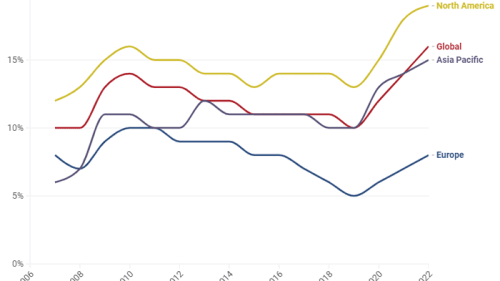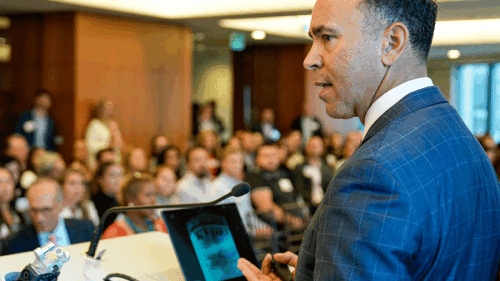In many ways, ULI’s history in Japan is the history of that nation’s institutional real estate market.
ULI Japan’s fall conference, which took place in Tokyo in November, marked the 20th anniversary of the establishment of the Institute in Japan, so the conference opened with a look back at how the Japanese market has developed over the 20 years since ULI was established.
The organization set up shop in Japan in 1997, following the first opportunity funds that came to buy nonperforming loans in the 1990s and has grown to the present day, when a new wave of foreign core funds have begun to invest in Asia’s largest real estate market.
Shuji Tomikawa, ULI Japan council chair and president, Mitsui Fudosan Investment Advisors, took the audience through two decades of development in Japanese real estate, including the development of nonrecourse lending, commercial mortgage–backed securities, and real estate investment trusts.
Tomikawa said he wished Japan’s ultra-conservative pension funds had invested in real estate nonperforming loans in the 1990s, which would have secured significant returns.
“There was a huge transfer of wealth from Japan to the U.S.,” he said. “I believe as much as JPY10 [trillion] to 20 trillion.”
However, the steady institutionalization of real estate over the past 20 years has been positive for Japan, he said. The establishment of a real estate investment trust regime in 2001 has been crucial to the development of the real estate market there. Tomikawa noted that Japanese real estate’s listed market capitalization had grown fivefold over the past two decades, compared with growth of only 1.8 times in the value of the overall Tokyo Stock Exchange.
As the Japanese market grew prior to the global financial crisis (GFC), a new development was the growth of domestic real estate managers. Not all survived the GFC, but the survivors now operate in a more balanced market, said Tomikawa.
The second keynote speaker, Masafumi Ota, deputy executive general manager, Development Headquarters, Urban Development Business Unit, Tokyu Corporation, looked to both the past and the future, as he outlined the history of development around Shibuya Station, home of the famous Hachiko statue and the iconic “Shibuya scramble” pedestrian crossing, familiar to many tourists.
Now, Tokyu has embarked on a “once in a century” redevelopment, he said, which would make the Shibuya area “a leader in global lifestyle culture.”
Over the next few years, the area around the station will see the construction of a number of new buildings, including one with an open rooftop platform, which will allow visitors to look down directly over the Shibuya scramble and is set to become a prime photo opportunity location.
The public realm and public events have become crucial to the success of Shibuya in recent years and these would be even more important in the future, said Ota. The district has hosted fashion, music, and arts festivals in recent years.
Part of the redevelopment will see the reestablishment of the Shibuya River above ground and it will form a public walkway.
Ota noted that the timing of the development program, which will see most of the new buildings opening prior to the 2020 Tokyo Olympics, was entirely coincidental. “These plans have been in the making for around 20 years, so winning the Olympics was a lucky coincidence,” he said.
Jon Tanaka, head of Angelo, Gordon, Japan, posed the toughest question of the day when he asked Ota how the already crowded rail lines into Shibuya would cope with the increased traffic generated by Tokyu’s new developments. A somewhat stumped Ota confessed that there were no plans to increase capacity.
The conference closed with a “fireside chat”–style interview of ULI Asia Pacific Chairman Dr. Seek Ngee Huat by ULI Global CEO Patrick Phillips. Such informal interviews, especially involving senior industry figures, are rare in Japan, so the session was considered rather daring.
Dr. Seek, a former head of GIC Real Estate, explained how the Singaporean investor had made its first move in Japan in 1996, investing in Shiodome, Tokyo. He said it took GIC around six years to fully establish its business there. He echoed the words of many successful foreign investors in Japan, saying: “I knew we had to take a very long-term view of the market.”
In 2014, GIC bought the office component of Pacific Century Place in Tokyo for $1.7 billion, making it one of a very few overseas investors to secure a prime Tokyo asset. The deal pricing was considered steep at the time, but a recovery in office rents and continued cap rate compression mean it would be impossible to re-create the same terms today.
Looking forward, Seek said: “I notice a renewed interest in Japan. There will be a lot of activity in the lead-up to the Olympics.”



